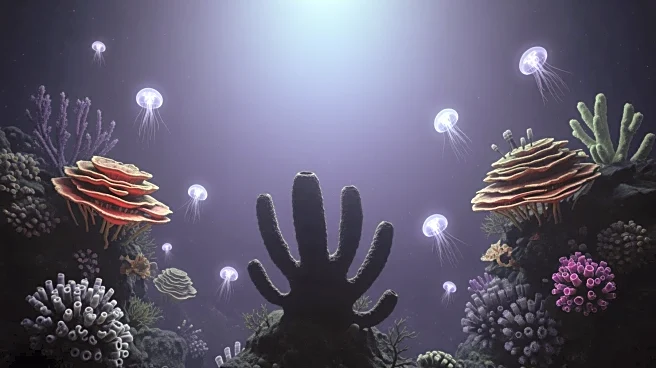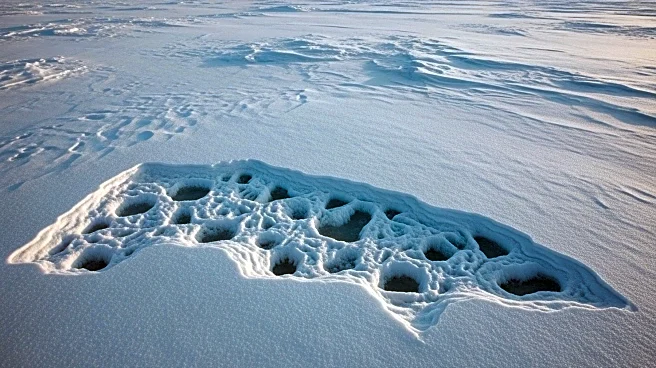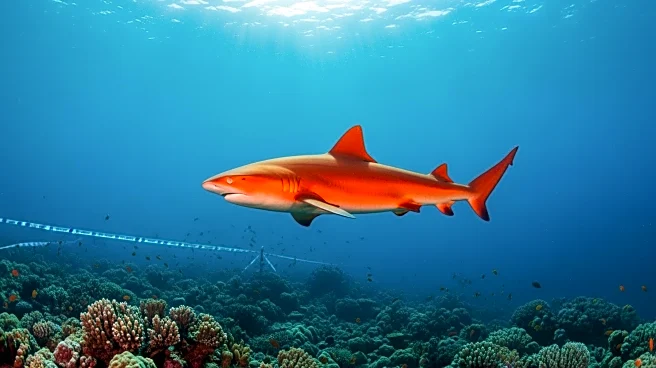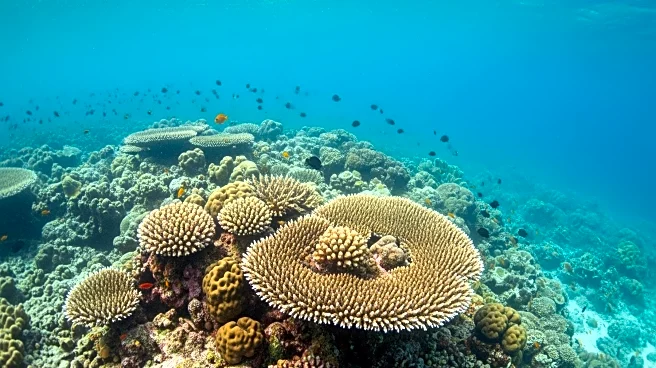What's Happening?
A recent study published in Nature has revealed significant insights into the global connectivity of deep-sea marine life, specifically focusing on brittle stars. Researchers sequenced DNA from 2,699 specimens
collected from 48 natural history museums worldwide. The study found that deep-sea organisms, unlike their shallow-water counterparts, can expand their ranges widely over millions of years due to stable environments and long-lived larvae. This research mapped the global distribution and evolutionary relationships of brittle stars, showing that these ancient creatures have migrated across entire oceans, forming a vast evolutionary network. The findings challenge the notion that marine species evolve in isolation, highlighting the deep ocean as a connected ecosystem.
Why It's Important?
The study's findings have significant implications for understanding marine biodiversity and conservation efforts. By demonstrating the connectivity of deep-sea ecosystems, the research suggests that conservation strategies should consider the global nature of these environments. This could lead to more comprehensive approaches to protecting marine life, taking into account the interconnectedness of species across vast oceanic distances. Additionally, the study provides valuable data for predicting how deep-sea species might respond to environmental changes, such as climate change or human activities, which could impact their habitats and migration patterns.
What's Next?
Future research may focus on further exploring the genetic diversity and migration patterns of other deep-sea species, potentially uncovering more about the evolutionary history and ecological roles of these organisms. Conservationists and policymakers might use this information to develop international agreements aimed at preserving deep-sea biodiversity. Additionally, the study could inspire new technologies or methodologies for studying marine life, enhancing our ability to monitor and protect these ecosystems.
Beyond the Headlines
The study raises ethical considerations regarding the exploitation of deep-sea resources. As the connectivity of these ecosystems becomes clearer, there may be increased pressure to regulate activities such as deep-sea mining and fishing, which could disrupt these delicate environments. Furthermore, the research highlights the importance of museum collections in scientific discovery, showcasing how historical specimens can provide insights into current ecological dynamics.











